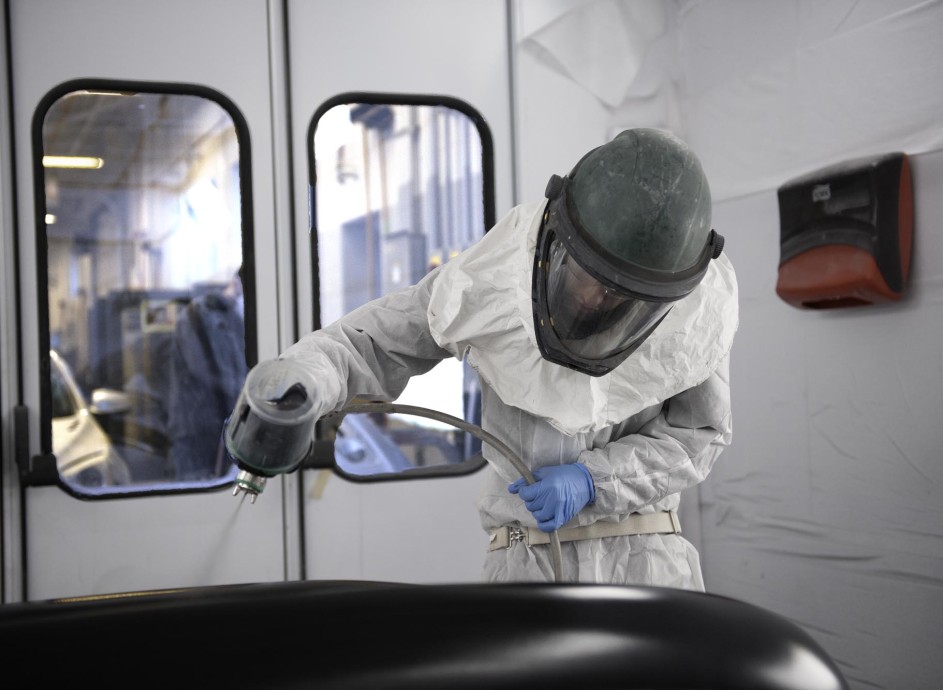
Program Overview
Program Details
Your Learning Experience
In the Auto Body Repairer Apprentice program, you’ll learn about the different types of materials used in the construction and repair of automobiles and gain confidence in using the materials and tools available to repair damaged vehicles. You’ll test your skills on everything from large-scale refinishing repairs such as complete paint jobs to detailing finishes and colour matching. You’ll also complete an apprenticeship component of the program, allowing you to earn real cash while testing your skills out in the real world, on real vehicles, with your future colleagues and business partners.
If your interests in fixing vehicles are diverse and you’re not sure if this is the right program for you, book a tour today and find out where your career dreams can take you.
Admissions
This is an apprenticeship program. You cannot apply to this program through ontariocolleges.ca. Applicants need a sponsor/employer. Your sponsor/employer must register you with:
Ministry of Labour, Immigration, Training and Skills Development (MLITSD)
Apprenticeship/Client Services
72-1200 Commissioners Road East
London, Ontario, N5Z 4R3
519-675-7788
MLTSD is responsible for scheduling your in-school training at Fanshawe College.
Career Information
Fanshawe's Auto Body Repairer Apprentice (Branch II - Block Release) program enables graduates to seek out employment opportunities as an auto body repair technician in a variety of places including auto body repair shops, automobile and truck dealerships, custom shops and more. Graduates can utilize the knowledge and skills attained through the apprenticeship program to get a footing in an in-demand and dynamic career.
Did you know Fanshawe consistently ranks high in graduation employment rates among large colleges in Ontario?
Here are some examples of career opportunities for graduates of Fanshawe’s Auto Body Repairer Apprentice (Branch II) program:
Auto Body Repair Technician
Perform many types of auto body repair to make a damaged car look as good as new.
Auto Body Prepper
Be responsible for providing correct technical preparation like prepping, polishing and inspecting of vehicles.
Automotive Body Painter
Prepare and mask repaired panels, refinish to paint manufacturer and colour specifications and polish to complete the job.
Learning Outcomes
Academic School
Program Coordinator:
Mike Kennelly
International Admission Equivalencies
Courses
| Level 1 | ||||
| ATBR-1001 | Applied Work Practices | 3 | ||
This course when completed will enable students to identify work related hazards and to work in a manner where he/she is not a danger to themselves or others in the work environment. Students will learn all aspects of WHMIS training and will recall the information at annual intervals in the workplace. Students will study acts and laws pertaining to the trade in auto collision body repair. Students will utilize classroom knowledge to work safely with proper hand tools and various shop equipment. Students will also be able to identify types of fastening, sealing, and hardware used within the auto body collision repair trade. | ||||
| ATBR-1002 | Welding | 2 | ||
This course when completed will enable students to properly use various forms of welding and cutting equipment in a safe a proficient manner. This includes performing oxy-acetylene fusion welding and cutting, the fundamentals of gas metal arc welding, and the capability of using a plasma arc cutter. Students will also be able to self evaluate their own work and make adjustments to improve their own welding personal techniques. | ||||
| ATBR-1025 | Body Frame Structure | 4.5 | ||
This course when completed will enable the students to identify the various vehicle design concepts and manufacturing processes. Aspects of structural and non-structural panel construction will be discussed along with safety features related to bumper system function and design. Students will learn repair techniques such as metal finishing as well as the use of appropriate filler materials utilized in the repair of non-structural panels. | ||||
| ATBR-1004 | Refinishing | 3 | ||
This course when completed will enable the students to identify the various vehicle design concepts and manufacturing processes. Aspects of structural and non-structural panel construction will be discussed along with safety features related to bumper system function and design. Students will learn repair techniques such as metal finishing as well as the use of appropriate filler materials utilized in the repair of non-structural panels. | ||||
| ATBR-1024 | Applied Mechanical | 2.5 | ||
This course when completed will enable students to understand the basic fundamentals of PCs and how to use them, electrical systems in vehicles including batteries, and how air conditioning systems function. Students will understand the importance of refrigerant recovery. Students will also learn electrical circuit repair, circuit protection, and gain knowledge of tires and rims. Students will relate this knowledge and apply this while in the labs working in groups. | ||||




